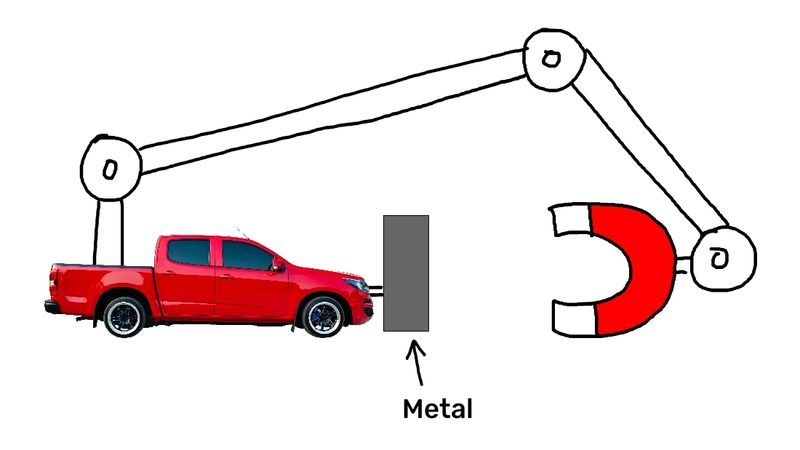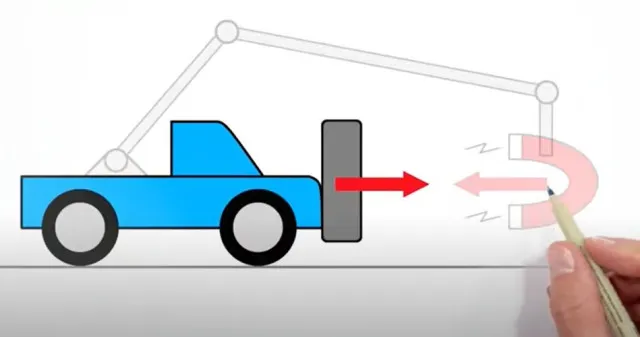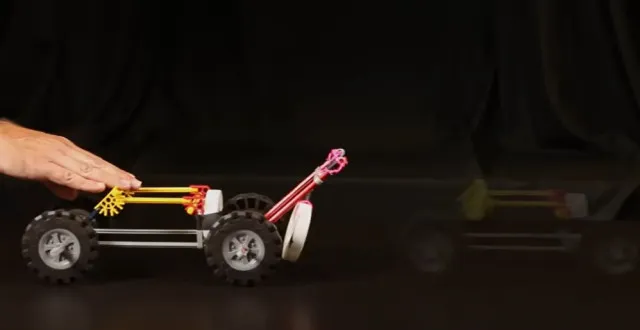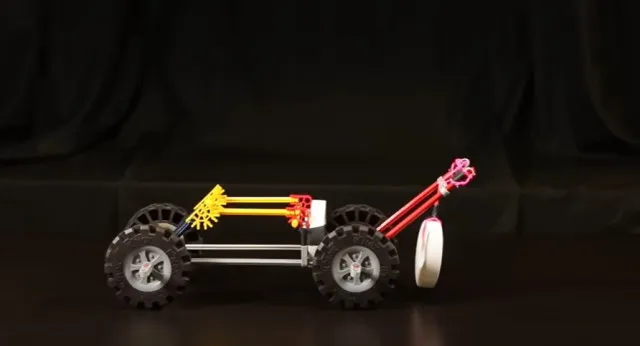The idea of a magnet-powered vehicle has sparked interest and debate across social media platforms, especially after a post on Twitter ignited curiosity about whether such a concept could be possible. The post, shared by a user under the handle @NoContextHumans, featured a simple request: “Give me one reason why this wouldn’t work,” referring to a truck propelled by magnets. This simple query has led many to ponder the possibilities, with the comment section filled with reactions, from confusion to disbelief.
But why exactly wouldn’t this intriguing idea work? Let’s explore the fundamentals of magnetism and physics that explain why the concept of a magnet truck isn’t viable.

The Basics of Magnetism and Motion
Magnets are fascinating objects that exert attractive or repulsive forces, depending on the orientation of their poles. While this force can be strong, it cannot be used to propel vehicles as some might imagine. Many people have suggested attaching a magnet to the front of a truck and using another magnet to push or pull it forward, but this idea, while creative, fails when you apply basic principles of physics.
If you’ve studied magnets, you’ll know that they cannot generate motion on their own in the way a truck engine powered by electricity or fuel can. Simply put, magnets don’t create continuous movement. For the magnet truck concept to work, it would essentially need to operate like a perpetual motion machine—a hypothetical device that can function indefinitely without an external energy source. However, perpetual motion machines violate the fundamental laws of physics, specifically the laws of thermodynamics.
Why a Magnet Truck Won’t Function: Understanding Newton’s Laws
To understand why the magnet truck won’t work, we need to turn to Newton’s Laws of Motion, which govern the behavior of objects in motion.
Newton’s First Law of Motion states that an object at rest will remain at rest unless acted upon by an external force. This means that for a truck to move, there must be an outside force acting on it. In the case of a magnet truck, the magnets are part of the same system. They attract each other, but since they are not applying force to an external object, there’s no force to move the truck.
Further complicating the matter is Newton’s Third Law of Motion, which asserts that for every action, there is an equal and opposite reaction. This means that if one magnet applies a force on the truck, the truck applies an equal force back on the magnet, causing the system to cancel out. As a result, no net motion occurs, and the truck remains stationary.
A Rubber Band Analogy for Simpler Understanding
To help clarify this concept, consider using a large rubber band to illustrate the force between magnets. Imagine you’re standing in front of a truck with a rubber band stretched between you and the vehicle. If you pull on the rubber band, you’ll create tension, and the truck may move toward you. This is because the external force (your pulling) is acting on the truck, propelling it forward.
However, if you sat inside the truck and tried to stretch the rubber band from within, the vehicle wouldn’t move. Why? Because there’s no external force. In the same way, the magnets on a truck, when attached to the same system, can’t generate enough force to move the vehicle.

Vehicles are powered by electricity, not by using magnets, indicating practical limitations. Image Credits: INTEGRAL PHYSICS
The Perpetual Motion Machine Fallacy
The idea of the magnet truck is often compared to a perpetual motion machine, a concept that has fascinated inventors for centuries. However, perpetual motion—a machine that operates indefinitely without needing energy input—is impossible according to the laws of thermodynamics.
For the magnet truck to work as imagined, it would need to continue moving without losing energy, which contradicts these laws. In reality, friction and air resistance would eventually bring the vehicle to a halt, even if it managed to move slightly. Therefore, the concept of a magnet truck breaks down when viewed through the lens of scientific principles.
Why Magnets Can’t Push a Truck: The External Force Factor
The key issue with the magnet truck idea is that it lacks an external force. In any system, motion is created when a force is applied from outside the system. In the case of traditional cars, that external force comes from the engine, which generates power through combustion or electrical energy. In the case of magnets, while they can attract or repel objects, they are part of the same closed system, meaning they don’t introduce the external force needed to move the vehicle forward.

The magnet and vehicle form one system, providing no external force to create movement. Image Credits: Jefferson Lab
For a magnet truck to function, you’d need an outside source of energy to drive the magnets. But if you’re already using an external energy source, such as electricity, you might as well power the vehicle using a traditional engine.
What Twitter Users Had to Say
Many social media users were perplexed by the original post suggesting the magnet truck idea. Comments ranged from playful to serious, with people offering insights into why it wouldn’t work.
One user remarked, “1 reason this isn’t a good idea without getting into the physics of it, you wouldn’t be able to see.” Another person joked, “Physicists have been suspiciously quiet since this dropped,” poking fun at how the idea might sound revolutionary at first glance.
A third user chimed in with a simple analogy, comparing it to pulling your own shirt in an attempt to move yourself—another impossibility according to the laws of physics.
Learning from the Magnet Truck Debate

A magnet truck wouldn’t work due to the laws of physics, specifically Newton’s laws of motion. Image Credits: Jefferson Lab
While the magnet truck might seem like a fun thought experiment, it teaches us valuable lessons about the importance of understanding basic physics. Concepts like Newton’s Laws of Motion and the laws of thermodynamics remind us that not all ideas are feasible, no matter how interesting they may sound.
For those who remain curious about how magnets work or want to experiment with forces and motion, it’s easy to test these principles with simple home experiments. The next time your car breaks down, try pushing it from the inside to see if it moves. This quick test highlights the importance of external forces in motion.
Conclusion: Why the Magnet Truck Won’t Work
In the end, the magnet truck is a concept that falls short due to the laws of physics. While magnets are fascinating and powerful, they can’t generate the external force needed to propel a vehicle. Instead, motion requires an external energy source, like an engine or motor, to function effectively.
The magnet truck discussion on social media may have sparked plenty of debate and curiosity, but it also serves as a reminder of how important it is to understand the fundamental principles of science. Whether you’re intrigued by the idea of magnetism or simply enjoy thought experiments, the magnet truck will likely remain a fun but impossible concept—at least for now.


